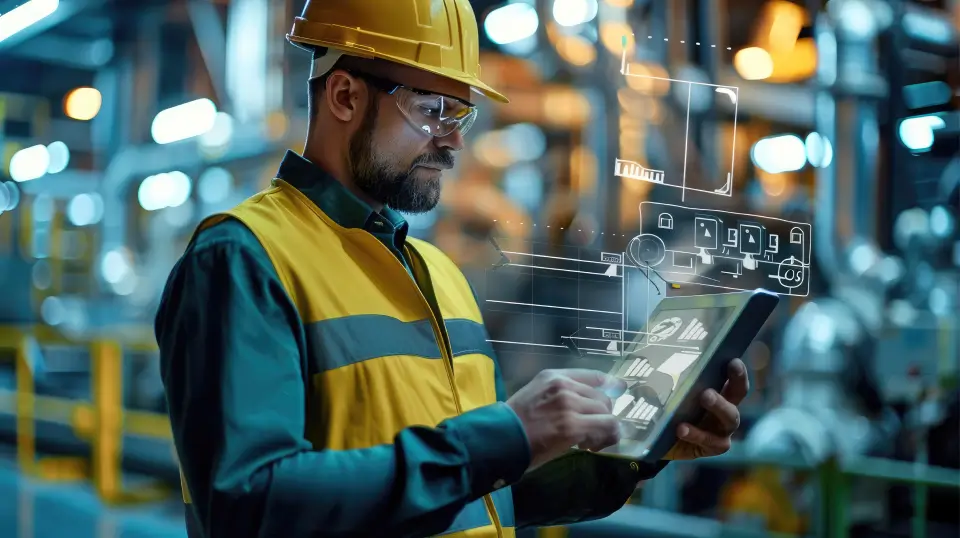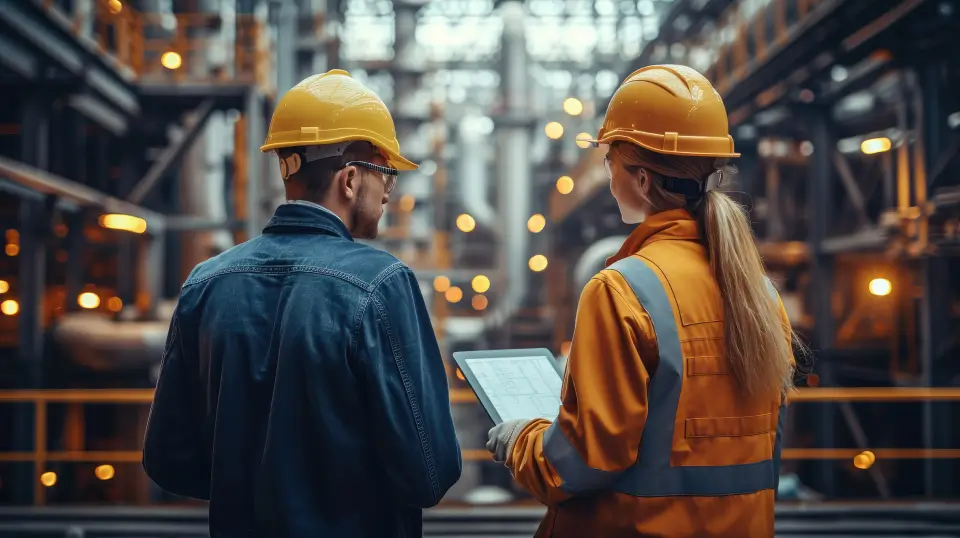In a world where every scroll through a news feed feels like a journey into the unknown, one theme consistently steals the spotlight: the rise of artificial intelligence (AI) and its potential to swipe jobs from under our feet. From robots flipping burgers to algorithms crunching numbers better than your favorite accountant, it seems humans are on the brink of being upstaged by our machine-based counterparts.
Concerns about being replaced by tech are nothing new; humans have grappled with this fear since as far back as the Great Depression. The classic film Modern Times, which hit screens in 1936, serves as a poignant reminder, offering a satirical take on the perennial tension between humans and technology. One of the most iconic scenes in the film involves the main character, the Little Tramp, being consumed by the factory's machinery, symbolizing technology replacing human labor in manufacturing and the potential consequences for workers. It reflects the anxieties of the time about the rise of automation and its impact on employment. This theme continues to resonate in discussions about AI and robotics in the modern era.
AI-powered training software is at the heart of this new age of progression, a solution that is reshaping the workforce by enhancing employees' capabilities.
There's good news despite the hoopla and nightmares about machines consuming our colleagues. Contrary to popular belief, AI is not just about automation and efficiency; it's about empowering human employees to reach new heights of skill, innovation, and job satisfaction — underscoring the importance of embracing AI as a supportive partner rather than a replacement for human labor.
The advent of AI has undeniably transformed the way we work. From streamlining processes to enabling predictive analytics, AI has revolutionized industries across the board. However, this rapid technological advancement has also sparked fears of job loss and dehumanization in the workplace. As machines become more capable of performing tasks traditionally carried out by humans, the existential question looms large: what is the future of work in an AI-driven world?

Contrary to the dystopian narratives often portrayed in popular media, integrating AI into the workforce doesn't have to spell doom for human workers. In fact, many organizations are embracing a more human-centric approach to AI, leveraging technology to augment rather than replace human capabilities. Two great examples are using AI-powered chatbots in customer service roles or robotics in manufacturing lines.
Consider John, a production line worker at a prominent manufacturing plant. Like many of his colleagues, John was initially wary of the introduction of AI-driven robotic arms. He worried that these machines would make his role redundant, pushing him to the fringes as automation took over the assembly line tasks. However, John's perspective changed when he saw firsthand how these AI robots complemented his work instead of replacing it. Rather than displacing John, the robotic arms provided him with invaluable assistance, handling repetitive tasks and freeing up his time to focus on more intricate manufacturing processes.
John's story illustrates a fundamental truth about the future of work: the most successful implementations of AI are those that prioritize collaboration between humans and machines. By leveraging AI to handle repetitive tasks and gather data insights, organizations can empower their workforce to focus on high-value activities that require human creativity, empathy, and critical thinking.
AI training software further enhances the power of collaboration between humans and artificial intelligence. Instead of viewing AI as a threat, businesses are leveraging it to elevate their workforce, fostering a culture of continuous learning and development. This approach not only boosts employee morale but also cultivates more engaged, innovative, and adaptable teams.

This personalized approach accelerates learning and enhances retention and mastery of new skills. Employees feel valued and empowered when their training experiences are tailored to their specific requirements, leading to greater job satisfaction and performance.
AI-powered training also fosters a culture of continuous learning within organizations. In today's fast-paced world, where skills become obsolete at an alarming rate, the ability to adapt and upskill is essential for employees and businesses. AI training software standardizes processes across large organizations and harnesses in-house expertise for enhanced efficiency, knowledge preservation, and streamlined operations.
One key benefit of AI-powered training and development tools, like DeepHow, is the ability to personalize learning experiences. AI can tailor training programs to individual employees' unique needs and preferences.
Across industries, preserving knowledge is critical, particularly in sectors with frequent turnover or reliant on specialized skills like manufacturing. Leveraging AI-driven video training helps safeguard expertise, ensuring it persists even as employees depart, retire, or shift roles. This continuity shields against disruptions and reduces the likelihood of process errors or inconsistencies.
Moreover, AI training software has the potential to democratize access to education and skill development. In traditional training programs, barriers such as cost, time, and location often limit participation. AI-powered solutions, however, can be deployed remotely and at scale, reaching a broader audience regardless of geographical location or socioeconomic status. This inclusivity benefits individual workers and contributes to a more diverse and dynamic workforce.
Implementing AI-powered video training further enriched John's skill set. These training modules, tailored to his specific needs, enabled him to upskill efficiently and adapt to the evolving technological landscape on the factory floor. Armed with heightened knowledge and expertise, John excelled in his position and contributed substantially to enhancing production line efficiency, ultimately earning a well-deserved promotion.

As we look to the future, one thing is clear: AI will continue to play an increasingly prominent role in the workplace. However, rather than viewing AI as a threat to human employment, we must embrace it as a tool to empower and support workers. The integration of AI into training and development initiatives, for example, does not diminish the importance of human interaction. On the contrary, it enhances it. By automating routine tasks and providing personalized support, AI frees up time for human trainers to focus on more complex and nuanced aspects of learning. This human-AI collaboration creates a fruitful relationship where each complements the other's strengths, resulting in a more effective and engaging learning experience.
Ultimately, the human side of AI lies not in its ability to replace (or devour) humans but in its capacity to enhance the human experience in the workplace. By leveraging AI to augment human capabilities, organizations can unlock new productivity, creativity, and innovation levels.

Start capturing, structuring, and activating your expert
knowledge today with a 14-day unlimited free trial.